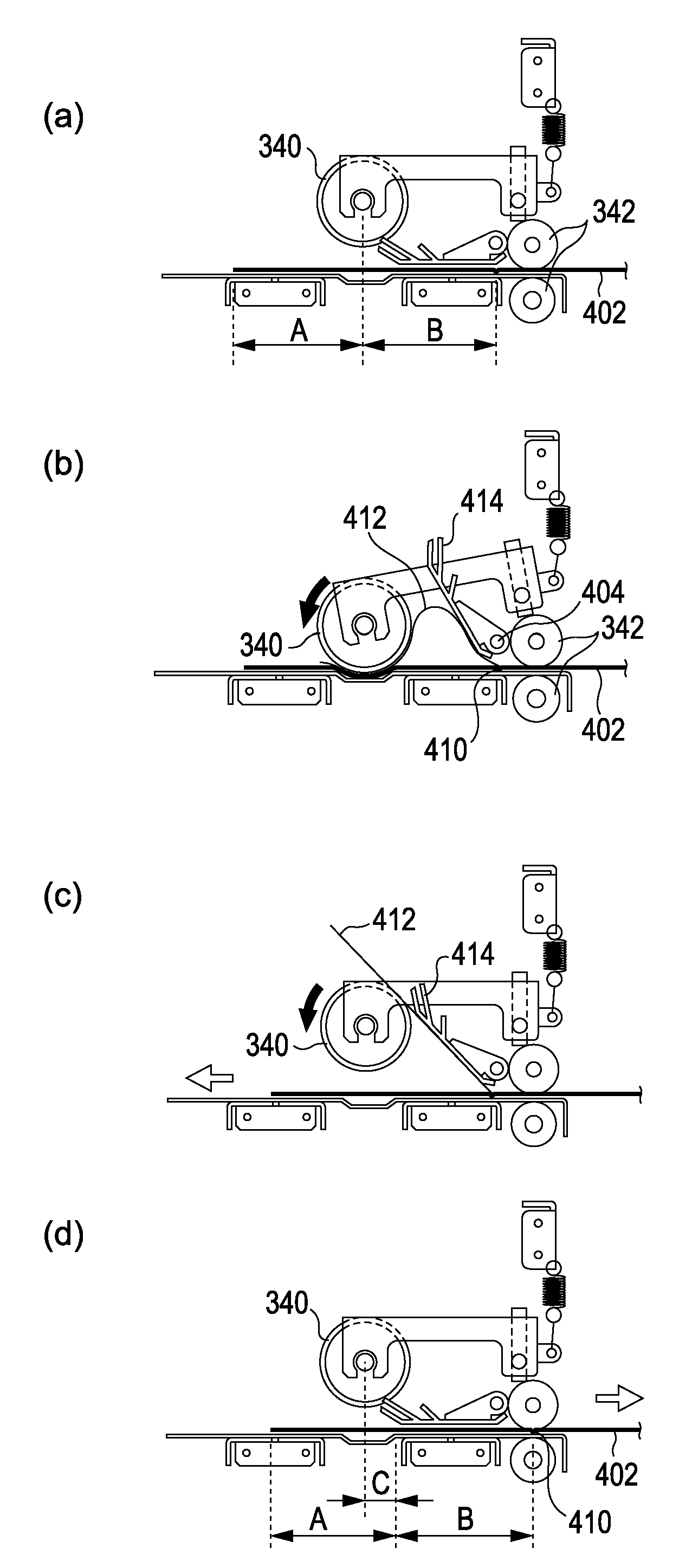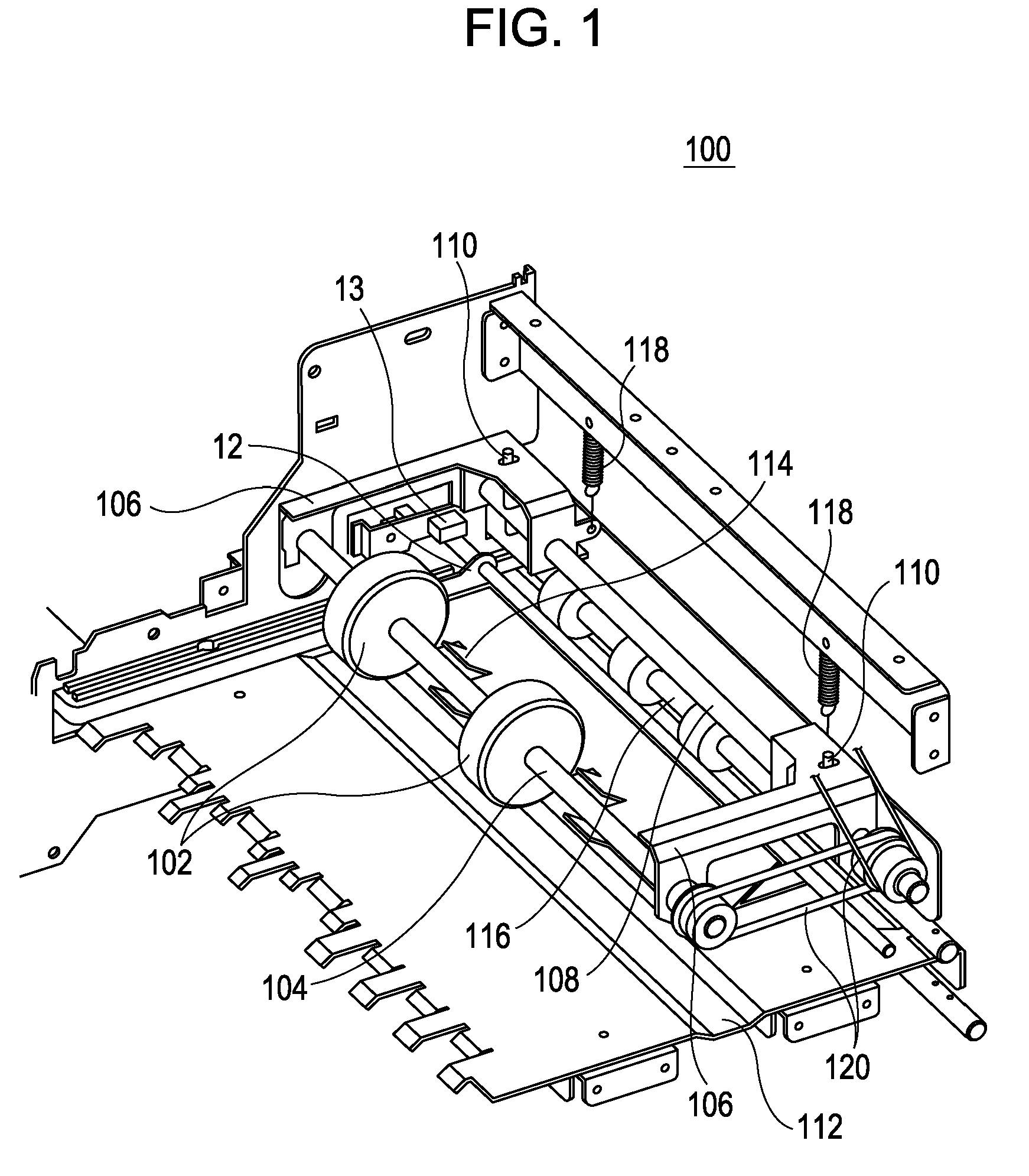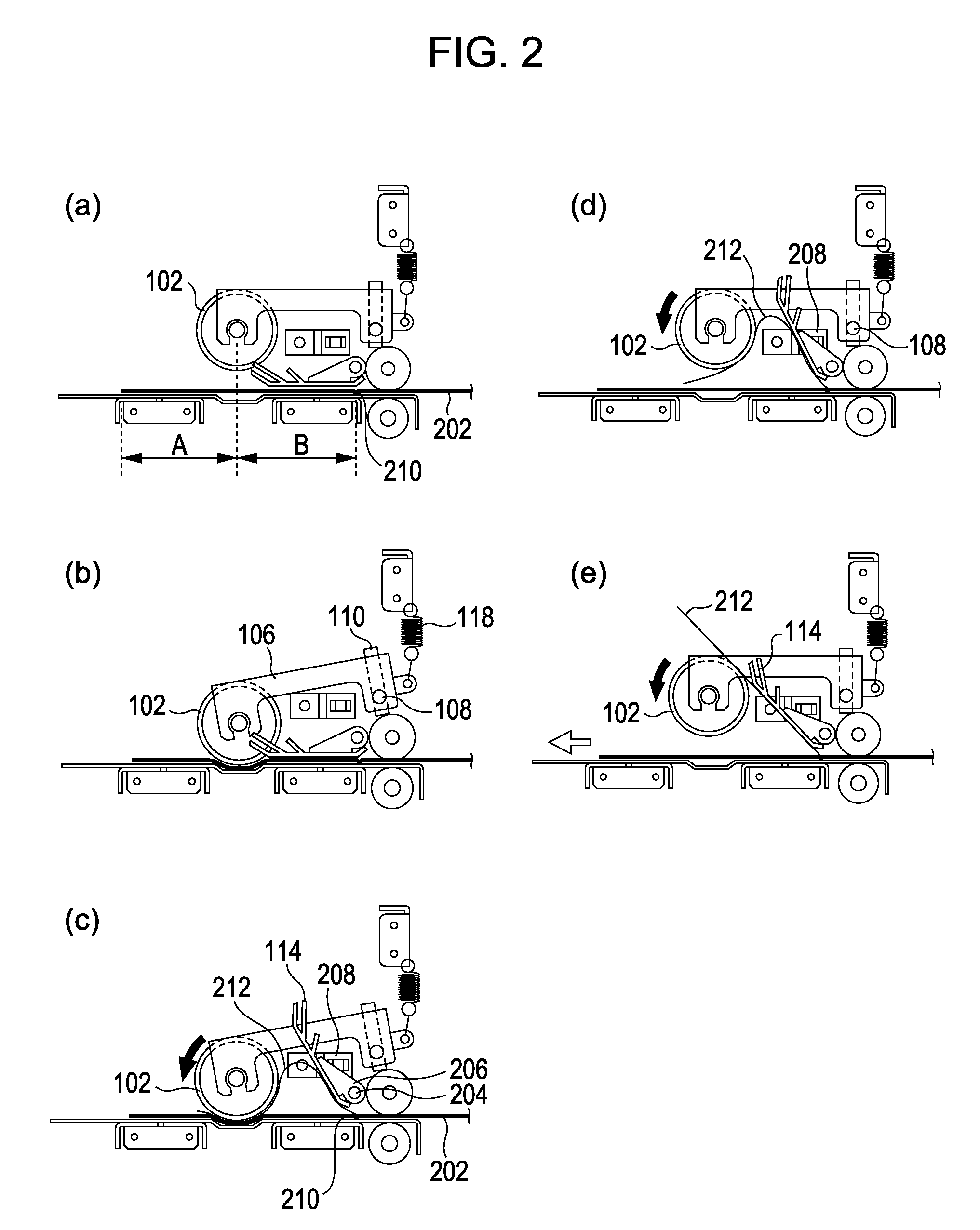Apparatus, method, and control program for turning the pages of a passbook
a technology of passbooks and turning rollers, applied in the direction of printing mechanisms, inking apparatus, instruments, etc., can solve the problems of page folding, reducing the distance from the lower end of the passbook to the turning roller, and increasing the trouble of folds, so as to prevent a turning error and multiple turning
- Summary
- Abstract
- Description
- Claims
- Application Information
AI Technical Summary
Benefits of technology
Problems solved by technology
Method used
Image
Examples
first embodiment
[0036]Referring to FIGS. 4 and 5, the present invention with the above structure will be described.
[0037]FIG. 4 shows the mechanism of turning the pages of a passbook according to the first embodiment as viewed from the side; and FIG. 5 is a flowchart for the turning operation of the first embodiment.
[0038]Before the start of a series of page turning processes, the optimum position to fix a passbook 402 (hereinafter, referred to as a “passbook holding position”) corresponding to the passbook length is set (stored) in a storing means in advance (PS502). The “passbook length” denotes the distance from the upside of the latter of spread pages (or the passbook folding axis 410) to the opposing lower side. The passbook holding position corresponding to the passbook length can generally be set so that almost the center of the latter page is located directly under the turning rollers 340, although it can be set at a different position.
[0039]The passbook holding position can be set in such ...
second embodiment
[0066]A passbook holding position and so on corresponding to the passbook length are set in advance before the start of a series of page turning processes (PS1002 and PS1003). A turning operation is started in response to a turning request (PS1004). A passbook sensor determines the length of the passbook and so on (PS1006 and PS1007). Then, the passbook 902 is conveyed to the position offset from the passbook holding position by the offset distance (PS1008), at which buckling is started by the rotation of the turning rollers 340 (PS1010), and it is determined whether the buckling has succeeded (BS1012). Those steps are the same as those of the
[0067]The processes in case of failure of the buckling (PS1020 and PS1026, BS1022, and PS1024) are also the same as those of the second embodiment.
[0068]When it is determined in BS1012 that the buckling has succeeded, the turning rollers 340 are moved slightly upward apart from the spread pages of the passbook 902 in response to that, and are r...
PUM
 Login to View More
Login to View More Abstract
Description
Claims
Application Information
 Login to View More
Login to View More - R&D
- Intellectual Property
- Life Sciences
- Materials
- Tech Scout
- Unparalleled Data Quality
- Higher Quality Content
- 60% Fewer Hallucinations
Browse by: Latest US Patents, China's latest patents, Technical Efficacy Thesaurus, Application Domain, Technology Topic, Popular Technical Reports.
© 2025 PatSnap. All rights reserved.Legal|Privacy policy|Modern Slavery Act Transparency Statement|Sitemap|About US| Contact US: help@patsnap.com



